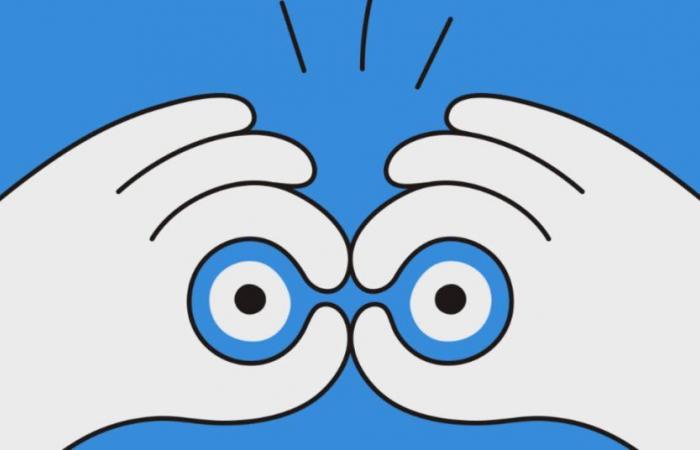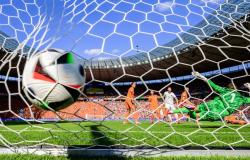➤ Subscribe to Philosophy magazine to have access to all our Bac Philo archives, as well as our magazine, our special issues and our Expresso moduleswhich allow you to learn philosophy in a simple and interactive way!
Introduction
Some artists only create in trance: thus Rimbaud advocated the “reasoned disruption of all the senses” so that the poet becomes ” seeing “, in the letter to Paul Demeny. The artist is then anything but a rhyme worker… However, versification and meter were for Rimbaud a matter of technique and were perfectly mastered. Had he not worked there, he who already knew how to write perfectly formed Latin verses at the age of ten?
Is art, in fact, a matter of mastery or inspiration? Is it to be placed on the technical side, like a know-how, an acquired skill? Or should we think about it first on the model of creation which provides existence from nothing, ex nihilo, without knowing how or why? Art is originally defined as know-how, close to that of the craftsman. We therefore speak of “art crafts”. But there is more to art than the simple execution of a technique according to know-how acquired through a long struggle: the work of art is not strictly reproducible, it involves something more, something strictly original. . It is always and necessarily a unique piece.
Depending on whether we define art and the work in one way or another, we then draw the face of the artist differently: is he a virtuoso technician, so expert in the mastery of his instruments of creation that originality, therefore, is possible for it? Or is technical execution, for him, only a means entirely subject to an inspiration which transcends it and which carries it? Is there more to the artist than the artist himself? Does the work exceed, from its conception to its production, the person who creates it?
1) Art is based on a loss of control: the artist is not a worker like the others
In our contemporary minds, art is first conceived as creation. Since Antiquity, a conception of the artist as inspired, in this case by the gods, has prevailed: thus the bard in Homer is blind because he sees what others do not see. This is one of the manifestations of the poet-vates, poet-prophet, a figure of the artist who will run through the entire history of literature. From then on, artistic creation can be thought of on the model of the creation of the world, demiurgic: the artist is super-powerful and can be revered like a god, since he is their spokesperson as are the sybils and pythia of the temples . The artist does not have to control his work, because art is not work: it is a revelation and it is a miracle.
The artist is all the less a worker as he can turn out to be brilliant. The Romantics took up the definition of the inspired artist from Antiquity, representing him as tortured by his genius, like Victor Hugo becoming a prophet of his time in THE Punishments or Anna Akhmatova presenting herself as a security guard of her time in her Requiem. But genius is etymologically the daimon who advises and leads the human being from within, like the one who advises Socrates on a moral level. The artistic genius is thus the one who, according to Kant, gives nature its rules: this position of overhang allows him to escape the restrictive nature of the rules, since he decides on them but does not submit to them. Clearly, the artist is not a worker like the others.
Technique is therefore secondary in art conceived as creation and not as work. According to Walter Benjamin, the work of art is characterized by its aura, which cannot be reproduced by technology. A photograph or pixelated image of a work, even in high definition, never replaces the experience of coming face to face with this work. The artist is the one who is capable of achieving this miracle of bringing into the world what was not there.
In the same way that the work transcends the person who receives it, the work of art is supposed to transcend the person who creates it. This reasoning by analogy seems valid; However, it can be misleading.
2) But art as work requires mastery, “at least” technical
Indeed, artistic genius is more of a myth than a reality. According to Nietzsche, words encourage us to suppose that what they designate exists in reality. For the term “artist” and “genius”, the misunderstanding is great: there is no spontaneous creation in art; the artist is defined precisely by underground, invisible work, at every moment. The artist is a hard worker whose efforts go unnoticed and whose story does not remember the drafts, the failures and the approximations, but praises only the successes. The exhibition at the Louvre of preparatory drawings for Leonardo da Vinci’s paintings alongside his works is, in this respect, enlightening: there is no masterpiece without preparatory work. It is therefore at the cost of an optical effect that artists are designated as brilliant, inspired, overwhelmed by a force greater than them.
If there is an error in reasoning there, there is also deception. This is what George Sand denounces in his numerous novels featuring artists: the figure of the dilettante, inspired, light-hearted artist is opposed to that of the laborer who, constantly, puts his work back on the job, following Boileau’s word. In Consuelo, Sand thus denounces the figure of Anzoleto, a gifted but frivolous singer, whose talent is worn out by not being worked on. Music is in fact an art where improvisation can only be deployed at the cost of hard, daily work, both in its interpretation and in its composition.
In this sense, technical mastery is essential to artistic creation and is a prerequisite. But control of one’s time and means is just as important. Likewise, Virginia Woolf, in A room of one’s own, she calls for an intimate and reserved space for women wishing to indulge in an intellectual or artistic activity. This place to retreat must be understood literally and figuratively: such a space must also be mental; to create, you must have the space in terms of availability of mind, to be able to free yourself from the concerns of everyday life. The artist, to create his Work, must be master of himself and his working conditions.
Thus art is first and foremost a work, and it is only at the cost of the construction of a myth that its production has been thought of as a creation.
3) Ultimately, the mastery that characterizes art is to be sought elsewhere than in technical virtuosity: the artist’s work is plural and collaborative
Because if art first requires technical mastery, it is because it is not so much a creation, according to the divine model, as a production. This is the term used by Aristotle in his Poetic : “poetic” comes from the Greek term poian, which means “to produce, to manufacture”. Artistic work is manufacturing work that requires mastery of its tools, its technique, its conditions of exercise. This therefore opens the way to artistic collaboration: there were indeed numerous artists’ workshops in painting, mosaic and sculpture during the Renaissance, but also before and after this period. We therefore attribute certain paintings to the “school of Rembrandt” for example, when the master’s signature is missing or when there is nothing to confirm that he had his hand on them.
If there remains a difference between studio, collaborative works and masterpieces, it is that there remains a “extra soul”, as Bergson defends, specific to the work of art. This does not imply that the artist is more than human, but that his talent and the development of his talent, like the intensity and conduct of his work, are particularly affirmed. In this way, it is also a collaborative work than that of art, since many artists have their work controlled and corrected by third parties: writers have had their production read in circles and salons since, again, the Renaissance at least, and by their publisher today; cinema is a particularly telling example in this respect, because there is no cinematographic work without a film crew, screenwriter, actors, actresses, etc. The artist is not master of his work on all levels because the work of art is always the result of collaboration and supposes openness.
Finally, the particular character of artistic work is also manifested in the lack of control over its reception. What also defines the work of art is that it resonates very strongly, and sometimes very differently, from one individual to another. Umberto Eco develops the analysis in The Open Work : certain works are characterized by their openness, by the plurality of interpretations that they favor and authorize. Such a process of participation in the meaning of the work is also exhibited in creations like the Fountain by Marcel Duchamp: how is it my gaze on an object that makes it a work? Or is it its placement in a museum that marks it with the seal of art?
In all cases, the artist is not completely in control of his work: from its conception to its reception, including its production, he shares this work with others. The work of art is an open work.
Conclusion
The artist is always a technician; although he can sometimes abandon his technique, he can only do so when he has mastered it sufficiently. Pablo Picasso thus abandoned his excellence in figurative drawing to try his hand at cubism with the Ladies of Avignon. But if art is partly the fruit of work, it is also something more that is difficult to define; However, if the effect produced by the work exceeds the public, this does not mean that the artist himself would not be master of what he creates, whether in his technique or his project. What escapes him in his work is its reception, its future, the way in which his work will resonate in the world. In this respect, the evolution of patronage of artistic creation through crowdfunding is significant: what if the art of tomorrow was that in which we all participated without anyone being responsible for it? master ?
Find all the answers to the Bac Philosophy 2024 test:
➤ General sector:
1. Can science satisfy our need for truth?
2. Does the state owe us anything?
3. Explanation of text: Simone Weil, The working condition
➤ Technological sector:
1. Is the artist in control of his work?
2. Is nature hostile to man?
3. Explanation of text: Plato, Laws
Expresso: interactive courses
The spark of love at first sight
Love at first sight is at the crossroads between myth and reality. At the foundation of love discourse, it is an inaugural experience, which we like to tell and sublimate as we wish.






